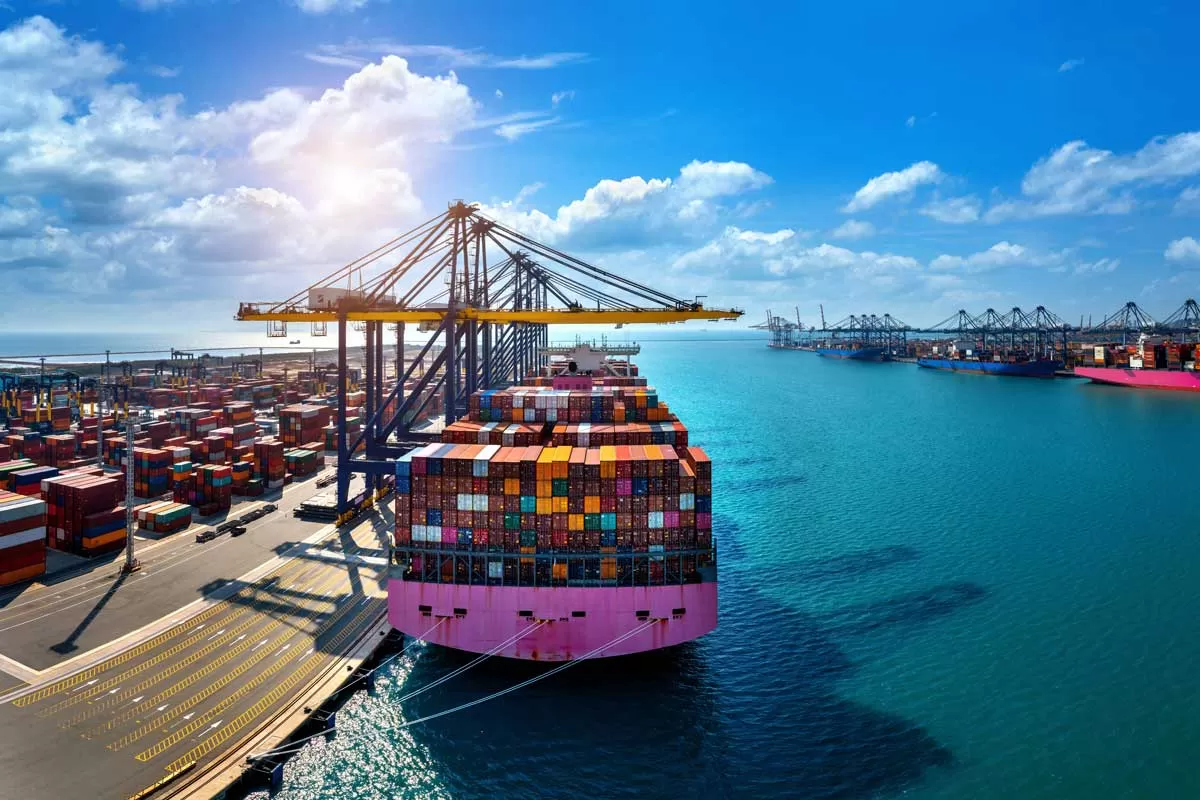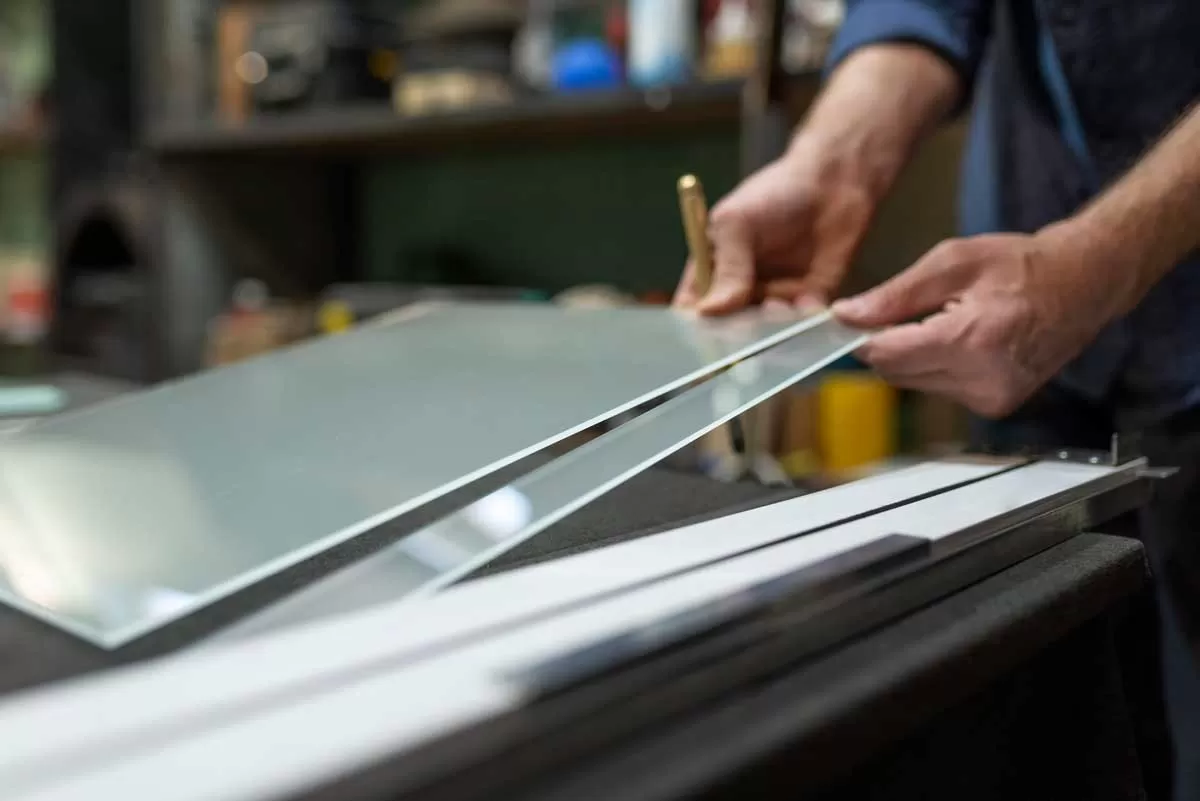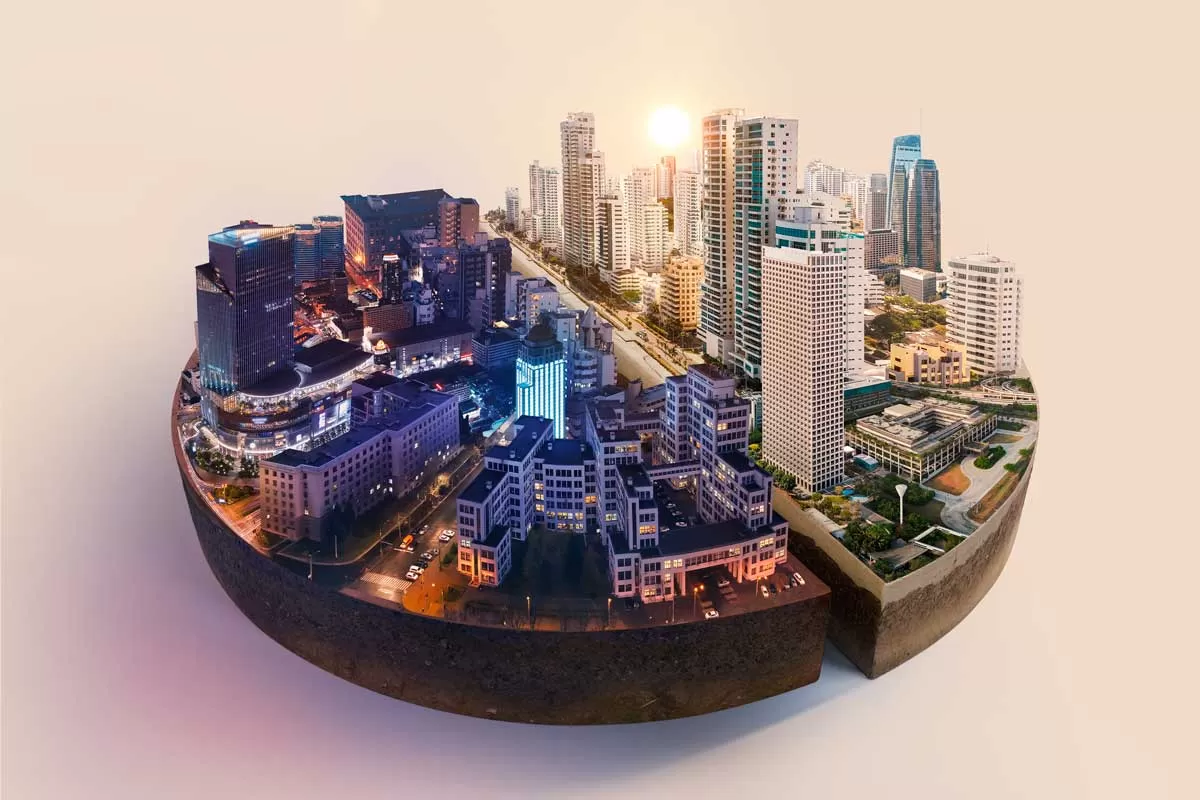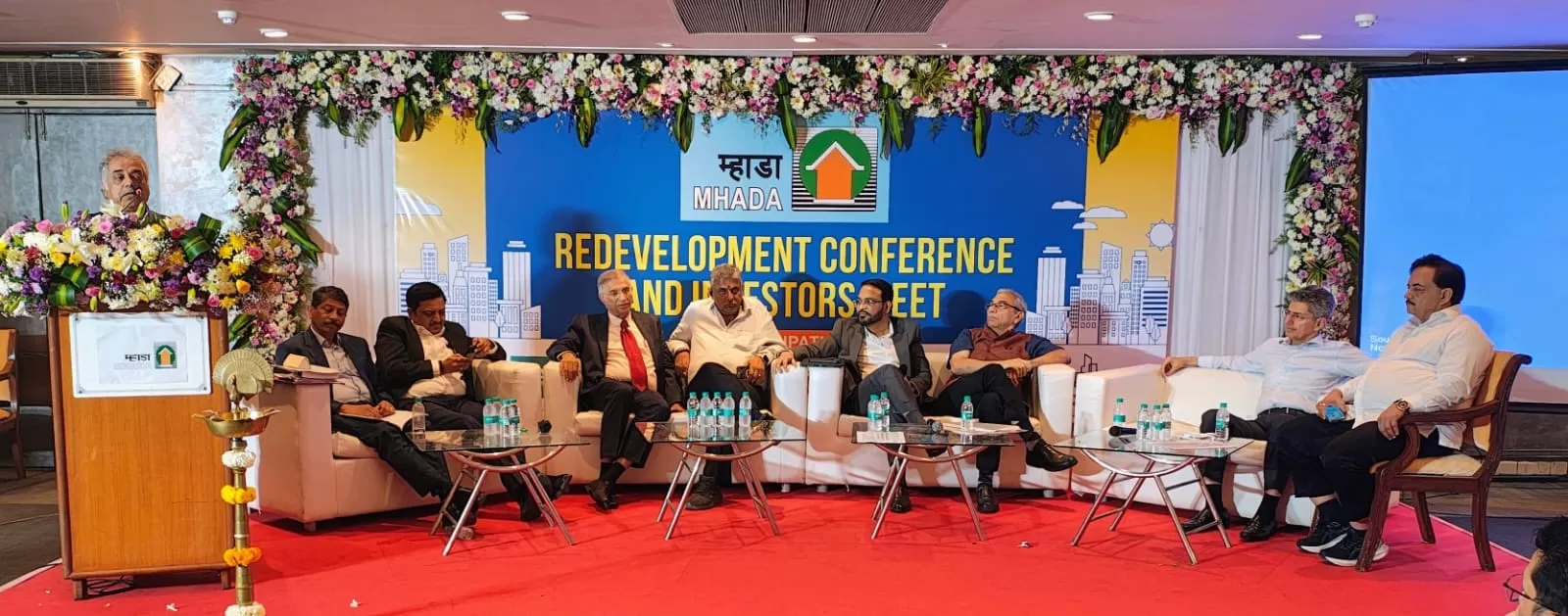India stands at a transformative juncture in its ports and logistics journey. As it overhauls its infrastructure, the country has a unique opportunity to cement its position as a global trade and logistics leader, leveraging one of the most ambitious infrastructure initiatives in the world, writes Manish Pant.Unknown to most, some of the world’s finest fruits and vegetables grow in the mineral-rich soil of India’s Northeast region. However, until a few years ago, due to isolation and inadequate transportation linkages, thousands of tonnes of this organically grown produce rotted as farmers lacked storage facilities. Since 2020, things have been steadily changing. Thanks to heavily subsidised Krishi Udan flights offering national and international connectivity for agricultural produce, grapes, oranges and pineapples from Manipur, Meghalaya, and Mizoram now reach supermarket shelves in the Middle East and Western Europe.“A key milestone has been the expansion of air cargo infrastructure, with the number of operational airports increasing from 74 in 2014 to 159 in 2024, significantly boosting regional and international trade connectivity,” Ramanathan Rajamani, CEO, Air India SATS (AISATS), a gateway and food solutions joint venture between national flag carrier Air India and Singapore Airport Terminal Services, tells INFRASTRUCTURE TODAY. Similarly, with companies like Samsung and Apple establishing state-of-the-art assemblies in India and improved road, rail, and port connectivity, the country has become the world’s second-largest mobile phone exporter. These transformations show what an enhanced logistics infrastructure can deliver.This modern resurgence reflects India’s historical role as a global trade powerhouse. Between the 1st and 17th centuries CE, India was among the world’s largest economies, commanding nearly half the global GDP alongside China. Indian traders carried spices, textiles, precious stones, and other items across seas in hardy wooden ships, leaving a cultural imprint worldwide. Such was the demand for Indian goods that historian Pliny the Elder, in 77 CE, lamented the drain of Roman gold due to this trade. Centuries of invasions and colonisation eventually erased this dominance, reducing India’s share of global GDP to just 3 per cent by Independence.The economic reforms of the 1990s marked a turning point, reigniting India’s journey toward becoming a global logistics and manufacturing hub. Speaking at the Maritime India Conference & Expo in January, Sarbananda Sonowal, Minister for Port, Shipping & Waterways, remarked, “There is money in water. Rapidly developing nations focus on building inland waterways and sea lanes. This is the way forward!” In the past decade, India’s merchandise exports surged from $311.4 billion in FY2014 to $437.10 billion in FY2024, according to Ministry of Commerce & Industry data. Programmes like Make in India, Startup India, Production Linked Incentives, and stimulus schemes for small and medium enterprises (SMEs) have significantly expanded the country’s manufacturing capacities. RS Subramanian, Senior Vice President for South Asia, DHL Express, a division of global logistics conglomerate DHL Group, states, “India remains at the cusp of economic growth, a centre for corporate expansion plans and a hub for trade given our strategic geographical position. The recently published DHL white paper titled China Plus X: The New Global Supply Chain highlights the growing importance of multi-shoring strategies that go beyond the classic China Plus One philosophy and focus on diversifying production and supplier locations in several countries.”Current geopolitics puts India in a unique position, says Sanjeev Sanyal, Member of the Economic Advisory Council to the Prime Minister (EAC-PM). “From an economic perspective, India is an island nation since our big land borders aren’t trade-friendly. We don’t trade anything with Pakistan, and though we do trade with China, we don’t trade with the part of China with which we share a border. We trade with eastern China, which is far away. Therefore, we must think of ourselves as a maritime country.” To seize this transformative moment, India must decisively address challenges and cement its status as a global trade and logistics powerhouse.Ports & Shipping: Anchoring the FutureIndia’s ports and shipping industry is pivotal in driving the nation’s trade and economic ambitions. Spanning a 7,500 km coastline, the country has 13 major ports and over 200 non-major ports. In FY2024, these ports managed around 820 million tonnes of cargo, per Ministry of Ports, Shipping & Waterways (MoPSW) data. Notes minister Sonowal, “India’s maritime sector has become a cornerstone of the country’s economic resurgence. India’s global standing has also risen with nine Indian ports making it to the World Bank Container Port Performance Index 2023, including Visakhapatnam ranking among the top 20 globally.”India is the world's 16th largest maritime nation and holds a 30 per cent share in ship recycling markets, placing it among the top five. It also ranks 18th in global shipping tonnage and operates a merchant fleet of 1,493 vessels with a total capacity of 13 million gross tonnage (GT). The government measures to bolster the sector include 100 per cent FDI in port development under the automatic route and a ten-year tax holiday for enterprises in ports and inland waterways. Projects like the Bharatmala Pariyojana aim to develop multi-modal logistics parks (MMLPs), while the ambitious Sagarmala Pariyojana, with six planned mega ports, has already completed 143 projects. Additionally, Maritime India Vision 2030 outlines over 150 initiatives to redefine the sector’s objectives.Key developments, such as the arrival of the first cargo ship in July last year at Vizhinjam International Seaport – a public-private partnership (PPP) between the Adani Group and the Kerala government for container transshipment – demonstrate India’s growing capabilities. Increased investments and improved operational efficiency are expected to strengthen the ports sector further. Sustainable domestic waterways and targeted infrastructure upgrades strive to position India as a leader in maritime trade. Says Sonowal, “India is now entering an era of mega ports. The Vadhavan port in Maharashtra is set to become the country’s largest container port, designed to handle ultra-large vessels. Similarly, the transshipment port at Galathea Bay in Great Nicobar will reinforce India’s strategic role in transshipment cargo, strengthening connectivity with global trade routes.”Sonowal also emphasises the focus on digitalisation and sustainability to enhance competitiveness. “The digitalisation and mechanisation of our ports have reduced container dwell time to three days and achieved a turnaround time of 0.9 days, surpassing many advanced countries.” Sustainability initiatives like the National Hydrogen Mission have seen ports such as Kandla, Paradip, and Tuticorin being developed as green hydrogen hubs. These efforts blend digital efficiency with ecological responsibility, positioning India as a leader in sustainable maritime development. Welcoming these initiatives, Maurits van Tol, Chief Executive, Catalyst Technologies, a division of the UK-based $16.4 billion Johnson Matthey group, highlights the significance of converting hydrogen into ammonia or methanol to enhance global trade. “Ammonia and methanol play dual roles as key tradable commodities and sustainable fuels for power generation and shipping. Prioritising their conversion from green hydrogen, with careful attention to scalability and economic feasibility, can significantly enhance India’s capability to transport green hydrogen efficiently and establish a strong position in global energy markets.”Expanding the role of Indian seaports in global trade also requires enhanced warehousing capacities. Stakeholders like Anshul Singhal, Co-Founder & Managing Director, Welspun One, a leading logistics park developer, reiterate the enlargement of free trade and warehousing zones (FTWZs) to streamline operations with duty deferments and faster clearances. “The upcoming SEZ (special economic zone) reforms must prioritise port-based SEZs, strengthening exports amid evolving US trade policies and global supply chain shifts. Additionally, deeper berths, automated cargo handling, and last-mile connectivity enhancements will be critical for India to become a global logistics and manufacturing hub.” Such a structured approach will improve efficiencies, attract investment, and solidify the country’s role in international trade.India is equally committed to revitalising its shipbuilding industry. EAC-PM’s Sanyal regrets the nation’s past neglect of its once-illustrious shipbuilding tradition, with 95 per cent of trade today being conducted through foreign vessels. “We not only have a long coastline, but we also have the know-how. After all, we are building nuclear submarines and aircraft carriers. We have the young people required to weld these ships together, and we have our internal demand.”The Union Budget 2025-26 has introduced measures to boost shipbuilding, including the revamped Shipbuilding Financial Assistance Policy, with an outlay of `180.9 billion, addressing cost disadvantages and enhancing competitiveness. Additionally, the `250 billion Maritime Development Fund has been established to provide long-term financing, with 49 per cent contributed by the government and the remainder from private investors. A landmark decision in this budget was the inclusion of large ships as infrastructure assets under the harmonised master list, facilitating access to low-cost, long-term financing crucial for the sector. “This is a major step forward, as it enables long-term financing for ships and shipbuilding. Equally important, four maritime laws are currently progressing through Parliament, with a couple more in the pipeline,” notes Sanyal. These reforms will modernise and replace outdated legislation, aligning the sector with contemporary needs.However, bottlenecks such as port congestion, complexities in land acquisition, the limited availability of specialised warehousing infrastructure near ports, and regulatory hurdles causing approval delays continue to hinder efficiency. Asserts Singhal, “Port-based industrial hubs are the way forward, enabling faster turnaround times, reducing costs, and improving competitiveness. To reinforce the country’s status as a global trading hub, it must accelerate investments in modern port infrastructure and integrated port-based warehousing, supported by proactive government and regulatory policies.”Although challenges like dispute resolution delays persist, initiatives such as the Society for the Affordable Resolution of Disputes (SAROD)-Ports mechanism, launched in 2020, aim to provide cost-effective and timely solutions, particularly for PPP projects in major ports. The framework’s effectiveness will become clearer as more cases are resolved.Fuelling Logistics for a New IndiaIn any economy, logistics serves as the backbone of growth, connecting industries and regions seamlessly. India’s logistics sector is witnessing significant transformation, driven by technological advancements, infrastructure expansion, and global trade integration. The COVID-19 pandemic accelerated e-commerce growth, redefining logistics and intensifying the demand for last-mile delivery and warehousing. Logistics companies, spurred by this shift, have adopted innovative, tech-driven solutions to meet the rising need for faster, reliable services across road, rail, air, and water.While these advancements mark significant progress, the sector still faces critical challenges. In the last couple of years, there has been intense debate on the actual logistics cost as a percentage of GDP. While the Economic Survey 2022-23 pegs them at 14-18 per cent of the GDP, a joint study by the think-tank National Council of Applied Economic Research (NCAER) and Department for Promotion of Industry and Internal Trade (DPIIT) estimates them at 7.8-8.9 per cent, nearing global benchmarks of 8 per cent. Amid ongoing debate, efforts to rationalise logistics costs focus on infrastructure upgrades, GST reforms, and technology adoption. “The PM Gati Shakti Master Plan has already identified 434 projects aimed at enhancing logistics efficiency and reducing costs. Over 18,000 kilometres of highways have already been constructed under Bharatmala. In addition, construction of MMLPs and [the Indian Railways'] Dedicated Freight Corridors (DFCs) also aim to reduce transit times and improve efficiency,” says DHL Express’ Subramanian. Launched in 2021, the PM Gati Shakti seeks to enhance multi-modal connectivity by integrating infrastructure planning across various sectors. An initiative under the programme facilitates the collaborative development of 28 districts. “These [districts] will become models for future development of India’s hinterland. Additionally, leveraging India’s rail infrastructure to increase its share in the modal mix connects demand to supply efficiently and sustainably. The Indian Railways’ focus on developing 23 new CRTs (Cargo Rail Terminals) will significantly expand the railway freight network,” says says Adhendru Jain, Vice President, Rail & Inland Terminals, DP World Subcontinent, the regional arm of DP World, a Dubai-based global logistics leader. In addition to MoPSW developing 13 MMLPs under the Sagarmala programme, the Ministry of Road Transport & Highways is also developing 35 as part of the first phase of its Bharatmala programme. According to Prakash Gaur, CEO, National Highway Logistics Management Ltd (NHLML), a subsidiary of the National Highways Authority of India (NHAI), “Five MMLPs are already under implementation, three have reached the tendering stage, and three more – located in Hyderabad, Patna, and Varanasi – will be tendered shortly. We recently signed an MoU with the Inland Waterways Authority of India for the Varanasi facility.”With over 70 per cent of operations unorganised, the logistics sector’s fragmentation leads to inefficiencies and a lack of standardisation. The industry is equally concerned about the mismatch between slow infrastructure growth and the rapidly increasing demand. “Road transport continues to dominate, making it harder to shift volumes to more cost-effective rail and waterway options. To truly enhance supply chain efficiency, we need better integration and investment in logistics hubs,” says Nitin Behl, Regional Head East & North India, Allcargo Terminals, a specialised warehousing firm. He stresses that more industrial corridors for logistics parks are needed in addition to upgrading rail, waterways, and cold storage to relieve pressure on roads and create a more balanced, cost-efficient logistics network. “This will help reduce supply chain fragmentation, making storage and distribution more seamless. A unified digital platform providing real-time updates on road conditions, congestion, and regulatory hurdles can optimise logistics planning and minimise delays.”Achieving further cost reductions hinges on accelerating multimodal integration, increasing rail usage, and ensuring effective policy execution with greater involvement and commitment from state governments. “Continued collaboration between industry stakeholders and policymakers will be crucial in addressing bottlenecks, improving multimodal transport networks, and ensuring cost-effective, sustainable logistics solutions,” emphasises Subramanian. AISATS’ Rajamani highlights further opportunities for efficiency and cost optimisation. “Expediting the full operationalisation of DFCs and expanding MMLPs will play a crucial role in enhancing freight movement,” he says, adding, “The Union Budget 2025-26 has prioritised investments in air cargo hubs, smart warehousing, and multimodal connectivity, ensuring a more seamless and efficient supply chain network.” In this regard, Gaur has some good news for stakeholders. “The MMLP sector is [currently] at a very nascent stage. With the development of MMLPs by NHLML, prospective developers have come forward to invest in them, considering the growing demand. Consequently, MMLPs are being developed by a multi-stakeholder partnership in collaboration with various [central] ministries and state governments on a PPP basis.” The National Logistics Policy (NLP) of 2022 also promotes technology-led solutions. “ULIP (Unified Logistics Interface Platform) has streamlined the sector, enabling access to logistics data across government systems on a single platform,” adds Subramanian. Other efforts, such as the Export Promotion Mission and BharatTradeNet – a unified platform for trade documentation and financing – also facilitate international trade. Additionally, the adoption of AI, IoT, blockchain, and automation continues to revolutionise logistics, streamlining processes, reducing delays, and promoting transparency. However, a skilled workforce shortage limits the adoption of advanced technologies. “Investing in dedicated training programmes will ensure a workforce ready to meet the evolving needs of the logistics industry,” avers Behl.Beyond structural inefficiencies, given the sector’s dependence on fossil fuels, environmental concerns pose another significant challenge. Sustainable practices like green logistics corridors and renewable energy adoption are critical for reducing supply chain emissions. DP World’s Jain advocates for the enhanced use of rail transport. “Compared to road transport, railways generate 65 per cent less CO2 emissions for long-distance surface connectivity. Therefore, using railways for long-distance containerised freight movement will not only provide businesses with a secure and low-carbon transport option but also reduce traffic and congestion on roads.” Opines Rajamani, “Green logistics initiatives, including the electrification of trucking, carbon credit incentives, and renewable energy-powered logistics parks, will drive long-term environmental benefits.” The AISATS logistics park at Bengaluru and the upcoming multimodal cargo hub at Noida International Airport exemplify sustainable, tech-driven infrastructure.IMEC: The New Spice RouteAs India addresses its domestic logistics challenges, it simultaneously positions itself as a key player in global trade through ambitious initiatives like IMEC. First proposed at the 2023 G20 meeting in New Delhi, IMEC is set to redefine global trade by creating opportunities for international collaboration. This ambitious multi-trillion-dollar infrastructure project integrates rail, road, and shipping networks to strengthen India’s economic ties with the Middle East and Europe. As an alternative to traditional trade routes, IMEC underscores India’s rising global prominence by proposing faster, cost-effective, and sustainable connectivity. It not only challenges China’s $1 trillion Belt and Road Initiative (BRI) – also referred to as the One Belt, One Road (OBOR) project – but also seeks to revive the legendary Spice Route on a much grander scale.Grégory Goba Blé, Director, MOVIN Express and Head, UPS India, is enthusiastic about IMEC’s potential. “India’s diplomatic approach has been impressive, focusing on collaboration and respect, which fosters business opportunities. Agreements between India, the Middle East, Europe, and the US represent a fantastic opportunity to advocate for and facilitate free trade.” Supported by the brisk growth in the Indian logistics sector, the company has developed 16 air and ground hubs across major commercial centres in a little under three years since its inception. “IMEC will benefit companies like ours, enabling us to support customers globally. With a large Indian diaspora worldwide, there’s significant potential for adding value, addressing demand, and offering solutions.”While the project’s benefits are immense, its success depends on overcoming key challenges related to execution and adherence to global standards. It envisions a robust transportation network spanning rail, road, and sea routes. Amit Goyal, Managing Director, South Asia, Project Management Institute (PMI), a global not-for-profit body to promote project management profession, notes, “The spin-off advantages to the Indian economy will manifest in many ways. Besides strengthening India’s status as a logistics hub for the Middle East and Western Europe, the IMEC corridor will reduce logistics expenses for Indian exports and imports once completed.” He emphasises the importance of comprehensive project planning, including integrated timelines and early risk mitigation to avoid delays and cost overruns, ensuring the project’s completion within budget and on schedule.Although still in its early stages, several Indian firms already look forward to the project. Amit Sharma, CEO & MD, Tata Consulting Engineers, the country’s largest private-sector engineering and project consultancy, observes, “Connecting India via Saudi Arabia, Israel, and Europe presents immense opportunities, though it requires a delicate balancing act. Bypassing Iran’s [Chabahar] port shifts focus to new territories, enhancing prospects for export hubs and trade in goods and services. With recent agreements, such as the one with the UAE for rupee trade, Indian firms – particularly those in power, aluminium, and oil and gas – are finding favour in the Middle East.” Others, like the Noida-based Jakson Group, which specialises in engineering, procurement, and consultancy, are already preparing. Desh Raj Pathak, COO, Jakson Infra, declares, “The vision of interconnected infrastructure, epitomised by slogans like ‘One World, One Grid,’ will become a reality through IMEC. By bolstering our domestic and international presence, we are well-positioned to contribute to mega-projects like it.” Ultimately, the success of IMEC hinges on India’s ability to establish a robust logistics and ports framework at home, ensuring its global ambitions are realised.Logistical ChallengesHigh Costs: Logistics costs in India range between 7.8-18% of GDP, with the higher estimates significantly exceeding the global benchmark of 8%. These figures vary based on think-tank and government studies.Fragmented Sector: Over 70% of operations remain unorganised, causing inefficiencies.Infrastructure Bottlenecks: Poor port connectivity and warehousing facilities disrupt smooth operations.Regulatory Complexities: Disjointed policies and taxes create delays.Skilled Workforce Shortage: Limited training curtails adoption of advanced technologies.Environmental Concerns: Heavy fossil fuel dependency increases the CO2 footprint.Aligning with Global Standards: 4 Proposed LawsIndian Ports Bill, 2025: Replaces the 1908 Act, introducing stricter safety measures, pollution control, transparency in charges, dispute resolution, and enhanced security.Bills of Lading Bill, 2025: Modernises the 1856 Act by simplifying language, reorganising provisions, and aligning with international shipping standards.Coastal Shipping Bill, 2025: Promotes coastal shipping as an eco-friendly, cost-effective alternative to reduce dependence on road and rail transport.Merchant Shipping Bill, 2025: Replaces the 1958 Act to modernise ship registration, crew welfare, and maritime safety, aligning with global conventions.Source: Government Data, IT ResearchLogistical ChallengesHigh Costs: Logistics costs in India range between 7.8-18% of GDP, with the higher estimates significantly exceeding the global benchmark of 8%. These figures vary based on think-tank and government studies.Fragmented Sector: Over 70% of operations remain unorganised, causing inefficiencies.Infrastructure Bottlenecks: Poor port connectivity and warehousing facilities disrupt smooth operations.Regulatory Complexities: Disjointed policies and taxes create delays.Skilled Workforce Shortage: Limited training curtails adoption of advanced technologies.Environmental Concerns: Heavy fossil fuel dependency increases the CO2 footprint.Source: Industry, IT Research“There is money in water. Rapidly developing nations focus on building inland waterways and sea lanes. This is the way forward!”- Sarbananda Sonowal, Union Minister for Port, Shipping & Waterways “India remains at the cusp of economic growth, a centre for corporate expansion plans and a hub for trade given our strategic geographical position. The recently published DHL white paper titled China Plus X: The New Global Supply Chain highlights the growing importance of multi-shoring strategies that go beyond the classic China Plus One philosophy and focus on diversifying production and supplier locations in several countries.”- RS Subramanian, Senior Vice President, South Asia, DHL Express“From an economic perspective, India is an island nation since our big land borders aren’t trade-friendly. We don’t trade anything with Pakistan, and though we do trade with China, we don’t trade with the part of China with which we share a border. We trade with eastern China, which is far away. Therefore, we must think of ourselves as a maritime country.”- Sanjeev Sanyal, Member, Economic Advisory Council to the Prime Minister“Ammonia and methanol play dual roles as key tradable commodities and sustainable fuels for power generation and shipping. Prioritising their conversion from green hydrogen, with careful attention to scalability and economic feasibility, can significantly enhance India's capability to transport green hydrogen efficiently and establish a strong position in global energy markets.”- Maurits van Tol, Chief Executive, Catalyst Technologies“The upcoming SEZ (special economic zone) reforms must prioritise port-based SEZs, strengthening exports amid evolving US trade policies and global supply chain shifts. Additionally, deeper berths, automated cargo handling, and last-mile connectivity enhancements will be critical for India to become a global logistics and manufacturing hub.”- Anshul Singhal Co-Founder & Managing Director, Welspun One“Additionally, leveraging India’s rail infrastructure to increase its share in the modal mix connects demand to supply efficiently and sustainably. The Indian Railways’ focus on developing 23 new CRTs (Cargo Rail Terminals) will significantly expand the railway freight network.”- Adhendru Jain, Vice President, Rail & Inland Terminals, DP World Subcontinent “Road transport continues to dominate, making it harder to shift volumes to more cost-effective rail and waterway options. To truly enhance supply chain efficiency, we need better integration and investment in logistics hubs.”- Nitin Behl, Regional Head for East & North India, Allcargo Terminals“Green logistics initiatives, including the electrification of trucking, carbon credit incentives, and renewable energy-powered logistics parks, will drive long-term environmental benefits.”- Ramanathan Rajamani, CEO, AISATS“Previously, finding developers for MMLP projects was a rare occurrence. Now, we have a sizable pool of developers eager to undertake these facilities due to significant demand growth. Consequently, alongside NHLM, increased participation from state government entities is also anticipated.”- Prakash Gaur, CEO, National Highway Logistics Management Ltd“India’s diplomatic approach has been impressive, focusing on collaboration and respect, which fosters business opportunities. Agreements between India, the Middle East, Europe, and the US represent a fantastic opportunity to advocate for and facilitate free trade. IMEC will benefit companies like ours, enabling us to support customers globally.”- Grégory Goba Blé, Director, MOVIN Express & Head, UPS India“The IMEC corridor will reduce logistics expenses for both Indian exports and imports once completed. Comprehensive project planning, including integrated timelines and early risk mitigation, will help avoid delays and cost overruns, ensuring the project’s completion within budget and on schedule.”- Amit Goyal, Managing Director, South Asia, Project Management Institute “Connecting India via Saudi Arabia, Israel, and Europe presents immense opportunities, though it requires a delicate balancing act. Bypassing Iran’s [Chabahar] port shifts focus to new territories, enhancing prospects for export hubs and trade in goods and services. With recent agreements, such as the one with the UAE for rupee trade, Indian firms – particularly those in power, aluminium, and oil and gas – are finding favour in the Middle East.”- Amit Sharma, CEO & MD, Tata Consulting Engineers“The vision of interconnected infrastructure, epitomised by slogans like ‘One World, One Grid,’ will become a reality through IMEC. By bolstering our domestic and international presence, we are well-positioned to contribute to mega-projects like it.”- Desh Raj Pathak, COO, Jakson Infra


















